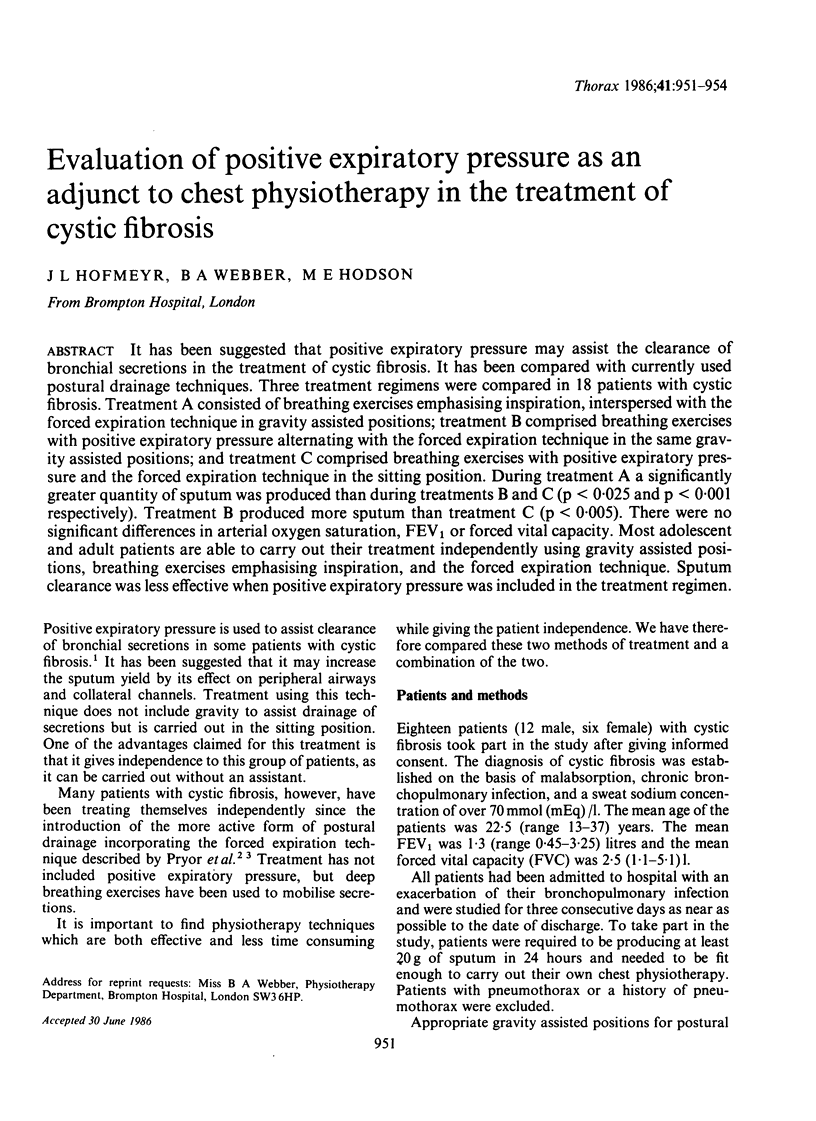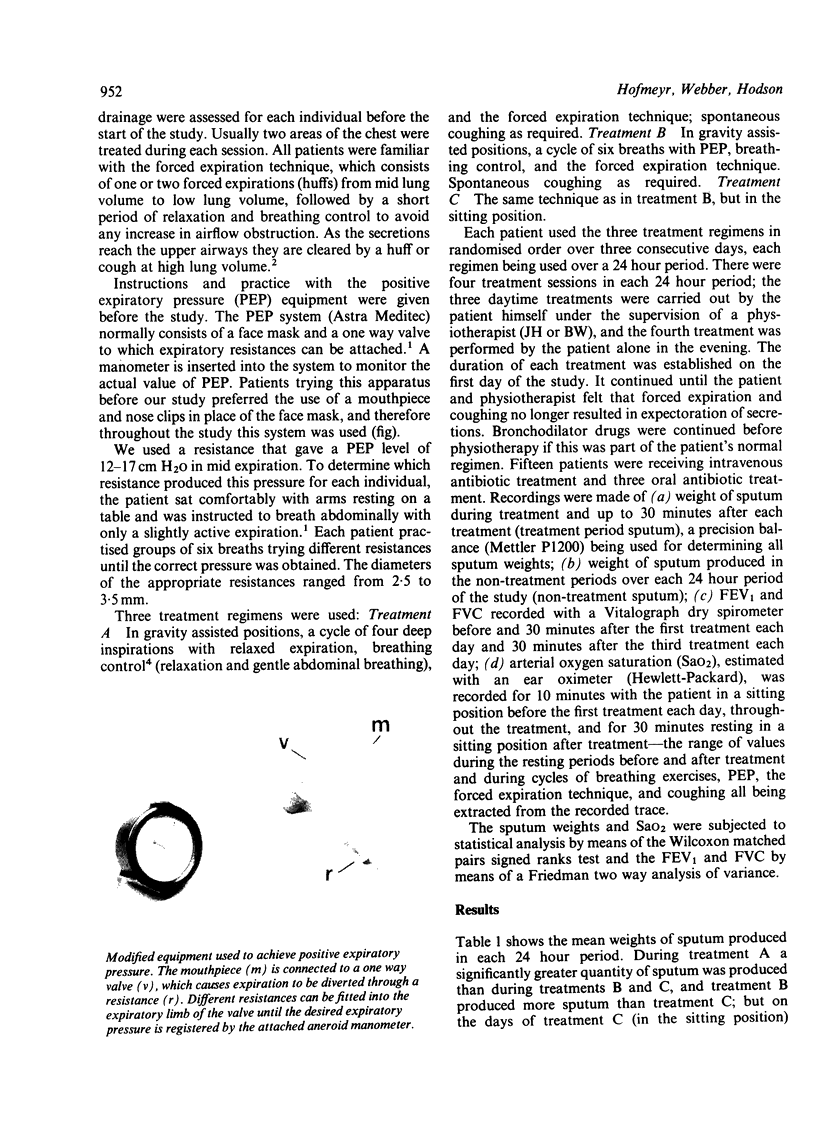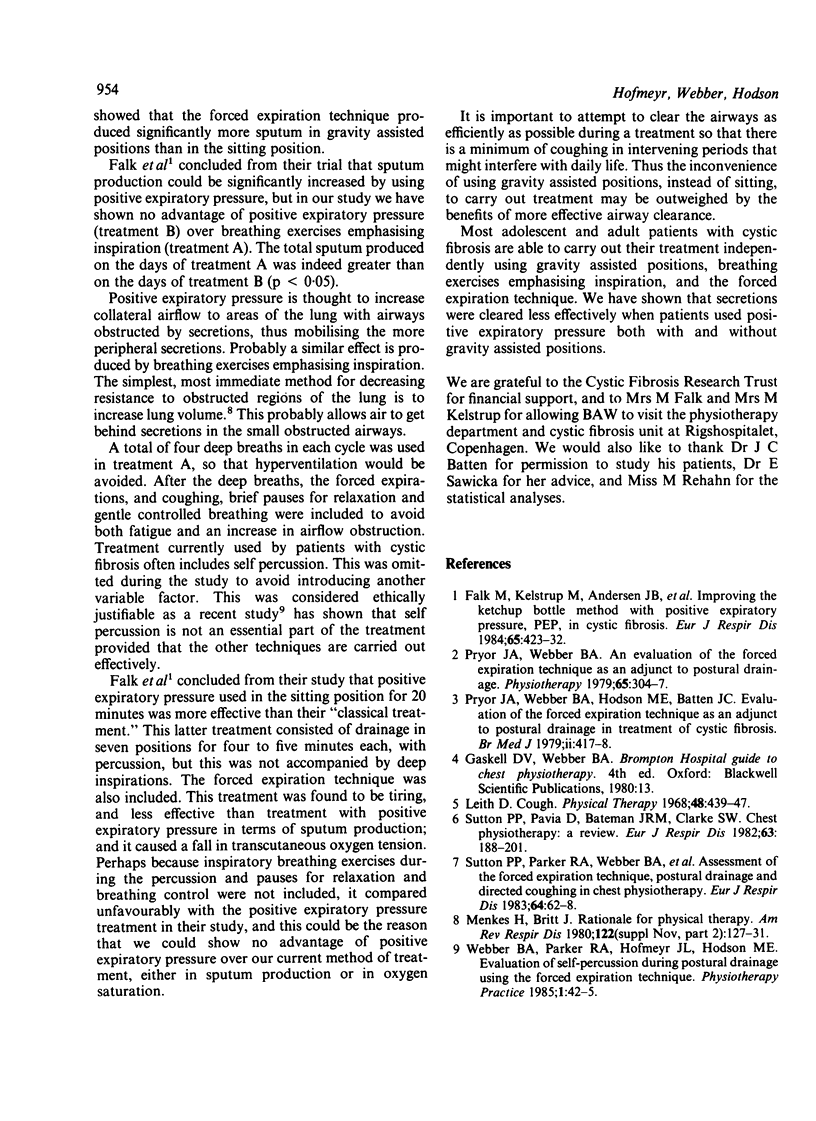Abstract
It has been suggested that positive expiratory pressure may assist the clearance of bronchial secretions in the treatment of cystic fibrosis. It has been compared with currently used postural drainage techniques. Three treatment regimens were compared in 18 patients with cystic fibrosis. Treatment A consisted of breathing exercises emphasising inspiration, interspersed with the forced expiration technique in gravity assisted positions; treatment B comprised breathing exercises with positive expiratory pressure alternating with the forced expiration technique in the same gravity assisted positions; and treatment C comprised breathing exercises with positive expiratory pressure and the forced expiration technique in the sitting position. During treatment A a significantly greater quantity of sputum was produced than during treatments B and C (p less than 0.025 and p less than 0.001 respectively). Treatment B produced more sputum than treatment C (p less than 0.005). There were no significant differences in arterial oxygen saturation, FEV1 or forced vital capacity. Most adolescent and adult patients are able to carry out their treatment independently using gravity assisted positions, breathing exercises emphasising inspiration, and the forced expiration technique. Sputum clearance was less effective when positive expiratory pressure was included in the treatment regimen.
Full text
PDF



Images in this article
Selected References
These references are in PubMed. This may not be the complete list of references from this article.
- Falk M., Kelstrup M., Andersen J. B., Kinoshita T., Falk P., Støvring S., Gøthgen I. Improving the ketchup bottle method with positive expiratory pressure, PEP, in cystic fibrosis. Eur J Respir Dis. 1984 Aug;65(6):423–432. [PubMed] [Google Scholar]
- Leith D. E. Cough. Phys Ther. 1968 May;48(5):439–447. doi: 10.1093/ptj/48.5.439. [DOI] [PubMed] [Google Scholar]
- Menkes H., Britt J. Physical therapy rationale for physical therapy. Am Rev Respir Dis. 1980 Nov;122(5 Pt 2):127–131. doi: 10.1164/arrd.1980.122.5P2.127. [DOI] [PubMed] [Google Scholar]
- Pryor J. A., Webber B. A. An evaluation of the forced expiration technique as an adjunct to postural drainage. Physiotherapy. 1979 Oct;65(10):304–307. [PubMed] [Google Scholar]
- Pryor J. A., Webber B. A., Hodson M. E., Batten J. C. Evaluation of the forced expiration technique as an adjunct to postural drainage in treatment of cystic fibrosis. Br Med J. 1979 Aug 18;2(6187):417–418. doi: 10.1136/bmj.2.6187.417. [DOI] [PMC free article] [PubMed] [Google Scholar]
- Sutton P. P., Parker R. A., Webber B. A., Newman S. P., Garland N., Lopez-Vidriero M. T., Pavia D., Clarke S. W. Assessment of the forced expiration technique, postural drainage and directed coughing in chest physiotherapy. Eur J Respir Dis. 1983 Jan;64(1):62–68. [PubMed] [Google Scholar]
- Sutton P. P., Pavia D., Bateman J. R., Clarke S. W. Chest physiotherapy: a review. Eur J Respir Dis. 1982 May;63(3):188–201. [PubMed] [Google Scholar]



